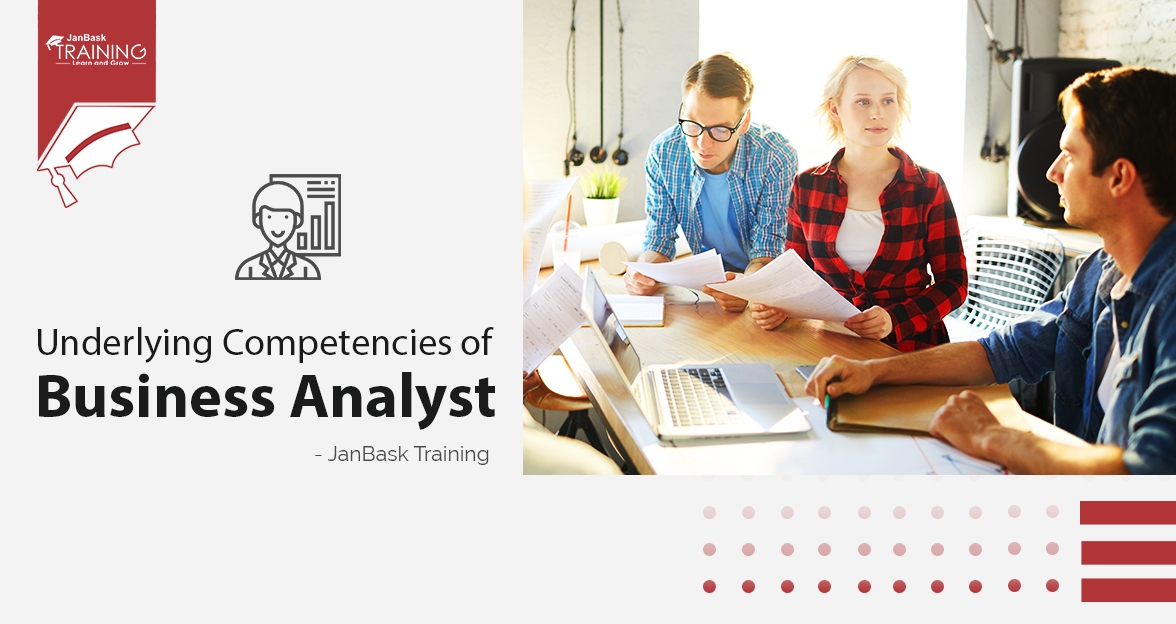Introduction
Businesses can become successful only if they can correctly predict what will happen in the future. This helps them to know what sales volumes they can expect in the coming few months. They can also plan their production accordingly and avoid short or excess stocks. But doing business is not easy without the right techniques. The best way to predict the future is by analyzing the organization’s data. Business statistics is a technique that helps apply statistical principles in business to predict different events.
Therefore, taking assignments in different spheres, including BA analyst courses online is inevitable for those professionals who choose to work as a statistician. Here, we demonstrate some features of statistics in business, its types, and usage.
What is Business Statistics?
Business statistics is the mechanism used to obtain information from data of any firm. It employs several statistics and definitions to enlighten upon the amount of vital information that propels better decisions. As such, business statistics definition is about using data collected by organizations from those sources.
Here are some important features of business statistics:
- Information for business statistics is probably based on studies, surveys or those of other information systems provided in the organization at that time.
- Business and statistical applications additionally help organizations comprehend the philosophical grounds of various occasions in the present life, each occasion just as to anticipate results of future events.
- Application of business statistics in marketing and product planning does not mean it is only restricted to such areas. Statistics actually extends to human resource planning, project management, and even finances.
Types of Business Statistics
The two major types of business statistics are differential statistics and inferential statistics.
-
Differential Statistics: The approach in business statistics implies the compression of information for convenient formulation across different organizations. Differential statistics is based on data that includes numbers, graphs, or tables. Such statistical analyses help people understand what has happened in the business and the reason behind it.
-
Inferential Statistics: This method of business statistics enables organizations to extract samples from a large population to explore the latter’s characteristics. This practice further helps experts understand every aspect of the population they are studying. Organizations can identify the traits of a population by examining the data collected from the sample through this method.
Applications of Business Statistics
The importance of business statistics lies in the fact that it involves several applications for various aspects of business operations. Here is a look at the key applications:
1. A/B Testing
It is a statistical technique used to carry out the comparison of different advertising campaigns, website designs, and content pages. This helps analyze whether such factors will be more successful in terms of getting optimized conversion rates.
A/B testing comprises the comparison of two or more variables over a digital asset to decide which one performs better to get a desired result. Examples include increasing click-through rates and user engagement.
A/B testing allows businesses to make decisions based on data. This is attained through a sophisticated statistical comparison. These may be concerned with design changes and adjustments made to the content, including other approaches to marketing. The process further contributes to positive user experience and helps get the desired outcomes.
2. Econometrics
It is an advanced application of business statistics that enables the implementation of statistical technologies in economic data. Econometrics plays an important role in economics, policy evaluation, and financial matters.
Econometricians use various sets of statistical tools and models to analyze the relationships between different economic variables. For example, they study supply and demand, interest rates and economic growth, and inflation and unemployment.
3. Environmental Analysis
This is an important application of business statistics that plays an important role in assessing and mitigating environmental impacts on organizations. Businesses can gather and analyze data related to environmental factors by employing statistical techniques. Examples include resource consumption, carbon emissions, pollution levels, and sustainability metrics.
This information is essential for minimizing environmental risks and adopting different sustainable practices
4. Healthcare Management
This is an important field where the importance of business statistics lies in optimizing resources, improving patient care, and ensuring the efficiency of healthcare organizations. Statistics is used to analyze patient data in this context. Examples include medical records and treatment outcomes.
This helps identify trends, predict disease patterns, and assess the effectiveness of medical interventions
What is the Scope of Business Statistics in Business?
An area of study can be termed the scope of business statistics when it incorporates all areas and techniques under this field. It seeks to propel business intelligence and improve efficiency using various tools for data analysis.
Businesses use statistics to do the following:
- Project sales numbers
- Evaluate production methods
- Develop short- and long-term strategies
- Build and adjust the organizational structure
There are also different types of data in business statistics that help assess areas of performance across organizations. The bottom lines of profit and loss can specify how a business is faring.
However, there are many other indicators that the organization can examine and understand through business statistics. For example, a particular company producing physical products must perform product testing. However, it is not possible to examine every item coming off of automated assembly lines physically.
This especially applies to cases of mass production.
So, business statistics helps with product sampling here. It estimates the production quality by analyzing a designated segment of all products.
Companies also employ various business statistical tools to gauge the efficiency of their workforce and the respective organizational structure. This includes examinations of time utilization, measurements of employee output, and other areas that help maximize the resources of the business.
Careers in Business Statistics
The rising reliance on different types of data in business statistics and the need for high-level analysis in many industries has led to the demand for the field across different sectors. Interested professionals can consider these career paths in the field:
1. Financial Analyst
These professionals assist individuals, agencies, and businesses with investments. These people assess the performance of stocks and bonds. They also forecast future market outcomes with statistical knowledge. It helps them gather and analyze relevant financial data.
Financial analysts review corporate statements and balance sheets. These professionals work with corporate representatives and analyze management teams.
The average annual salary of a financial analyst is based on several factors.
Financial Analyst Salary: Based on Experience
The average financial analyst salaries based on the years of experience are as follows:
- Entry Level: Financial analysts who are in entry-level positions earn $62,516 per year.
- Senior Financial Analyst Salary: The most experienced financial analysts earn up to $104,520 per year.
Financial Analyst Salary: Based on Location
Here is a look at the financial analyst’s salary based on location.

Financial Analyst Salary: Based on Industry
Various industries require financial analysts. Here is a look at the salaries:

2. Cost Estimator
These professionals gather and assess data to forecast the price of any project. They also develop the product or offer a particular service. Cost estimators also incorporate elements like time and labor to produce analysis. They use statistics to enhance the work of product engineers, account managers, and sales teams.
Now, here is a look at the salaries of cost estimators depending on various factors.
Cost Estimator Salary: Based on Experience
- Entry-Level: Cost estimators at the entry-level earn around $58,473 per year.
- Senior Cost Estimator Salary: A cost estimator at a senior level with several years of experience earns up to $112,410 per year.
- Cost Estimator Salary: Based on Location
The cost estimator’s salaries based on location are:

Cost Estimator Salary: Based on Industry
Here is how different industries pay cost estimators:

Source
3. Business Analyst
These professionals are also called management consultants who specialize in evaluating organizational efficiency. A business analyst can assess different business problems, collect relevant data, and also devise methods for analyzing issues effectively. They are further responsible for analyzing financial statements and labor reports. Interested individuals can take business analyst online training to learn more about this role.
BAs, as they are popularly called, use statistics to identify trends and recommend their respective solutions. These professionals often work closely with project managers to implement process recommendations and review business progress. You must have the necessary business analyst skills to become a certified professional in this field.
Now, here is a detailed look at the business analyst salaries based on different factors.
Business Analyst Salary: Based on Experience
Business analysts get paid depending on their respective years of experience as follows:
- Entry Level: An entry-level business analyst with less than a year of experience can earn around $71,652 per year.
- Senior Business Analyst Salary: A business analyst working in the field for several years can earn up to $122,638 per year.
- Business Analyst Salary: Based on Location
Here is a look at the business analyst salaries based on location:

Business Analyst Salary: Based on Industry
Business analysts are paid across different industries based on the latter’s requirements. Here’s a look:

Source
4. Market Researcher
These professionals analyze industry-related conditions to forecast sales for different products and services. Market researchers also monitor trends in specific marketplaces to assess potential outcomes for their organization.
They further evaluate the results of marketing campaigns and programs. Market researchers develop processes for gathering data and analyzing figures with all kinds of advanced software and algorithms.
A market researcher’s salary depends on various factors.
Market Researcher Salary: Based on Experience
A market researcher’s salary varies depending on the professional’s experience as follows:
-
Entry Level: A market researcher on an entry level earns $57,500 per year.
-
Senior Market Researcher Salary: An experienced market researcher can earn up to $95,000 per year.
Market Researcher Salary: Based on Location
Here is a look at the market researcher salaries based on location:

Market Researcher Salary: Based on Industry
Here is how market researchers are paid across different industries:

Source
5. Statisticians
Statisticians and mathematicians examine different types of data and apply business models to study and solve organizational challenges. They use surveys and experiments to gather information after determining which data they need to resolve a problem.
These professionals also use different established concepts in their analyses. However, they may also create new theories, rules, and models for analyzing things.
Statisticians around the world are paid based on various factors.
Statistician Salary: Based on Experience
Here is a look at the statistician’s salaries depending on their experience.
- Entry Level: A statistician at an entry-level position earns around $72,551 per year.
- Senior Statistician Salary: Experienced professionals in this field earn up to $144,933 per year.
- Statistician Salary: Based on Location
Here is what statisticians worldwide earn depending on their respective locations.

Statistician Salary: Based on Industry
Here is a look at the different statistician salaries based on industry:

Source
How Does the Future of Business Statistics Look Like?
Around 50% of organizations will adopt modern data quality solutions to support their digital business initiatives through 2024. It means a significant portion of businesses understand the importance of statistics in driving digital transformation.
The following trends further specify what the future of business statistics looks like:
Big Data and Analytics
The proliferation of digital technologies has led to the generation of several types of data. Businesses have started using advanced analytics and data mining techniques to extract valuable insights from this type of data.
This further allows them to make more informed decisions and optimize processes to gain a competitive edge.
Predictive and Prescriptive Analytics
Businesses have adopted predictive and prescriptive analytics apart from traditional descriptive analytics. A well-informed organization can properly predict the future and find scope for innovation. It is possible to achieve this with the help of the statistical models and algorithms. They can not only propose suitable actions for realizing desirable results but also determine the most appropriate ones.
Machine Learning and AI
The change in digital technology is currently achieved using different machine learning and AI algorithms. They help automate processes, as well as predict customers’ behavior. In addition to that, these algorithms also pave the way for more personalized applicability and improved supply chain management. The theoretical bases of these technologies are heavily based on statistical principles.
Data Visualization
Another skill important for employers is to know how an organization can present its data so well that anyone would understand it with ease. It also will need the help of data visualization tools that would make it possible for businesses to formulate complex statistical information. This appeals even to all the non-statistical decision makers. It augments the process of decision-making and guarantees precise processes that ensure enhanced business systems.
Ethics and Privacy
When there is an increased data collection, the responsibility is to handle data ethically and ensure customer privacy. Businesses are using statistical techniques to ensure adherence to all the data protection regulations and to maintain customer trust.
Are You the Right Candidate for a Business Statistics Role?
Yes, I can be the right candidate for a business statistics role given that I possess the right qualifications and experience for the role. Usually, there are many courses available in this field in India from diploma level to postgraduate level. Many top institutes offer courses in statistics which students can opt to make their career. Some best courses are:
Certificate & Diploma Courses
- Certificate in Statistical Methods and Applications
- Diploma Courses in Statistics
Bachelor Courses
- Bachelor of Arts (BA) in Statistics
- Bachelor in Statistics
- Bachelor of Business Administration
- Bachelor of Science (Hons) in Statistics
Master Courses
- Master of Arts in Statistics
- Master in Statistics
- Master of Science (Hons) in Statistics
- Master of Business Administration
Doctoral Courses
- Master of Philosophy in Statistics
- PhD in Statistics
Learn Business Analyst in the Easiest Way
- Learn from the videos
- Learn anytime anywhere
- Pocket-friendly mode of learning
- Complimentary eBook available
Conclusion
Business organizations need to make decisions that are always as accurate as possible. Wrong decisions can often result in unpleasant consequences. However, correct decisions do not come from guesswork or gut feeling. They must come from different types of solid data. That is why business statistics is considered to be important across industries and organizations.
Companies use the available data to use statistical techniques to find insights. Experts in business statistics have excellent career prospects because these companies want to use such techniques to make their operations more profitable. So, what do you need to become an expert in this field? While there are many options available, we recommend going for the business analyst online course. The business analytics syllabus will enable you to master the essential skills required in business statistics. Browse through the extensive solutions offered by Janbask to equip yourself with the knowledge on BA training needed to contribute to informed decision-making in organizations.
FAQs
What is an Example of Business Statistics?
A common example of business statistics is an organization performing a chi-square test to determine if the proportion of customers who selected a particular product is significantly different from the expected proportion based on chance alone.
What is the Function of Business Statistics?
Business statistics can help different organizations understand their present and predict their future. This process can save money and help organizations find new opportunities.
What Kind of Statistics is Usually Used for Businesses?
You will find two very common types of statistics for all businesses. These include descriptive statistics and inferential statistics. You can learn more about both these statistics in the above article.
What is Primary Data in Business Statistics?
Primary data is collected for the first time from different sources. It comes through all kinds of personal experiences or evidence. Most of them are particularly for research. Primary data is also described as first-hand information or raw data.
What is Secondary Data in Business Statistics?
The secondary data is a record of second-hand information that relates to a specific kind of business. These are not taken from the same sources where the primary data was drawn. Such data that have been collected but are not very reliable compared to the primary data are often termed as secondary information.
Business Analyst Course
Upcoming Batches
Trending Courses
Cyber Security
- Introduction to cybersecurity
- Cryptography and Secure Communication
- Cloud Computing Architectural Framework
- Security Architectures and Models
Upcoming Class
-1 day 30 Dec 2025
QA
- Introduction and Software Testing
- Software Test Life Cycle
- Automation Testing and API Testing
- Selenium framework development using Testing
Upcoming Class
2 days 02 Jan 2026
Salesforce
- Salesforce Configuration Introduction
- Security & Automation Process
- Sales & Service Cloud
- Apex Programming, SOQL & SOSL
Upcoming Class
6 days 06 Jan 2026
Business Analyst
- BA & Stakeholders Overview
- BPMN, Requirement Elicitation
- BA Tools & Design Documents
- Enterprise Analysis, Agile & Scrum
Upcoming Class
9 days 09 Jan 2026
MS SQL Server
- Introduction & Database Query
- Programming, Indexes & System Functions
- SSIS Package Development Procedures
- SSRS Report Design
Upcoming Class
9 days 09 Jan 2026
Data Science
- Data Science Introduction
- Hadoop and Spark Overview
- Python & Intro to R Programming
- Machine Learning
Upcoming Class
2 days 02 Jan 2026
DevOps
- Intro to DevOps
- GIT and Maven
- Jenkins & Ansible
- Docker and Cloud Computing
Upcoming Class
2 days 02 Jan 2026
Hadoop
- Architecture, HDFS & MapReduce
- Unix Shell & Apache Pig Installation
- HIVE Installation & User-Defined Functions
- SQOOP & Hbase Installation
Upcoming Class
2 days 02 Jan 2026
Python
- Features of Python
- Python Editors and IDEs
- Data types and Variables
- Python File Operation
Upcoming Class
3 days 03 Jan 2026
Artificial Intelligence
- Components of AI
- Categories of Machine Learning
- Recurrent Neural Networks
- Recurrent Neural Networks
Upcoming Class
17 days 17 Jan 2026
Machine Learning
- Introduction to Machine Learning & Python
- Machine Learning: Supervised Learning
- Machine Learning: Unsupervised Learning
Upcoming Class
9 days 09 Jan 2026
Tableau
- Introduction to Tableau Desktop
- Data Transformation Methods
- Configuring tableau server
- Integration with R & Hadoop
Upcoming Class
10 days 10 Jan 2026

































